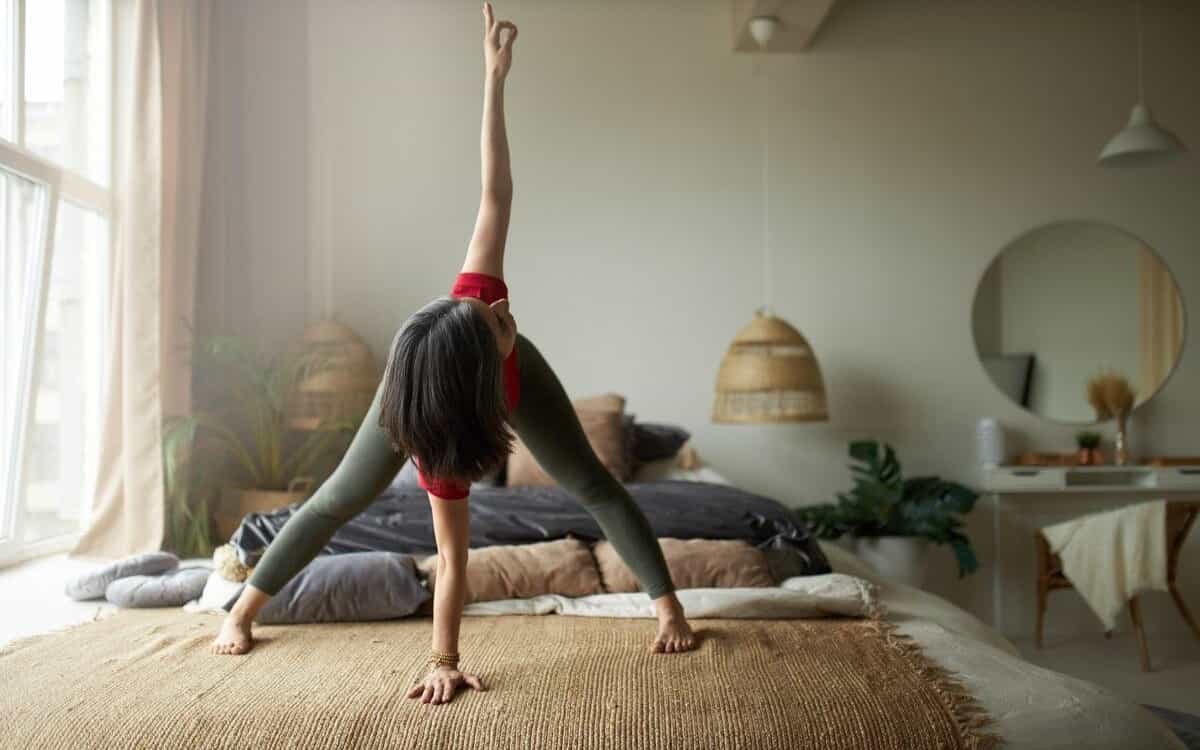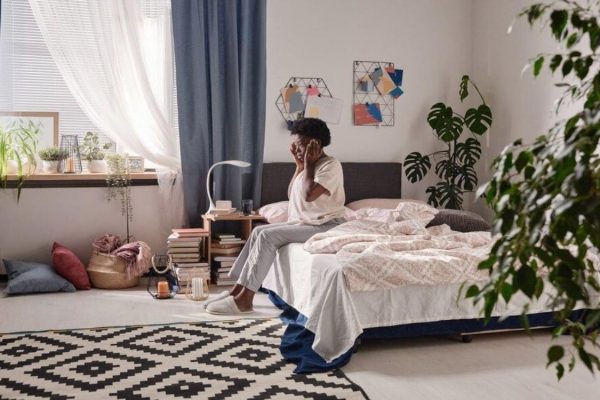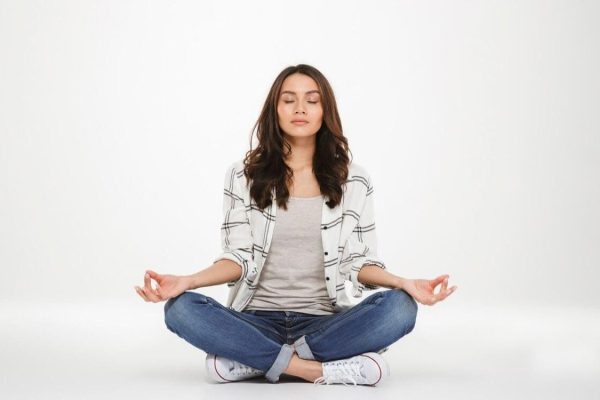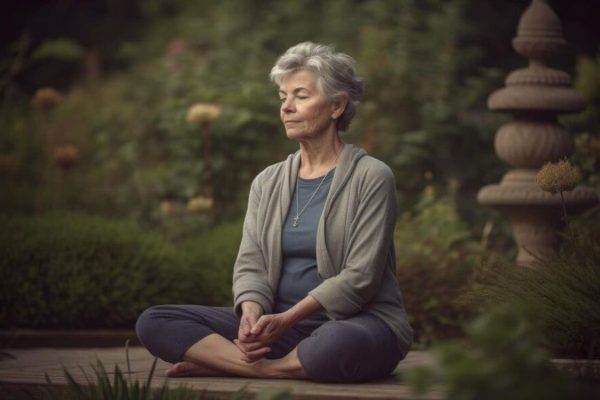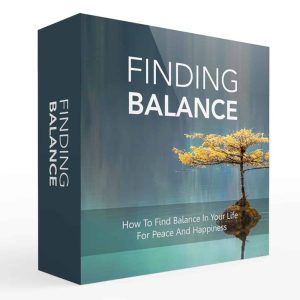Yoga modifies your emotional state. It is a special kind of depression treatment since it addresses the mind-body link in a variety of ways. The core principles of yoga are mindfulness, movement, and breathing.
These parts work together to calm the mind, relax the body, and give you inner peace. Doing yoga every day makes you more emotionally intense. Yoga helps you express yourself and learn more about yourself. The positions work on specific body parts to reduce stress and improve mental health.
Through the mind-body link, yoga helps balance your mind and body. Because it is easy to do, yoga is also suitable for people of all ages and exercise levels. No matter how good you are at yoga, it’s good for your mental and physical health.
7 Home Yoga Poses That Can Help With Depression
Downward-facing dog
The Downward Facing Dog is a vital yoga pose that does more than make you flexible. This pose makes a perfect V shape and works the whole body, loosening up tight spots in the mind and body. It creates stronger core arms and leg muscles and increases blood flow.
It’s easy for people of all skill levels to use, and it works quickly and effectively to relieve stress and clear the mind. By letting go of worry and resting the mind, this pose is suitable for your physical and mental health for a few minutes.
The Standing Forward Fold
People who don’t move much can heal their backs and calm their minds with the Standing Forward Fold. Moving slowly and calmly in this position can help you release your feelings. Besides being good for your mental health, this position enables you to sleep and lowers your blood pressure. It can be used by people of different levels of flexibility who are interested in mental health through yoga.
The Chair Pose
The chair pose goes against masculine ideas about easing stress, and it is hard to do well. This pose strengthens the legs, hips, knees, and shoulders, which is good for physical and mental balance. The task helps you focus and keeps you from giving up when things get tough. When they do the chair pose, they strengthen their bodies and brains, which is good for both.
The Warrior Pose
The warrior pose is a physical pose and a sign of strength and determination. Stretching your hips and shoulders can help you feel better about your self-image and boost your confidence. For 10 to 15 breaths, stand in a robust and unbreakable warrior pose.
This opens up tight spots, makes breathing more accessible, and links physical and mental power. Beyond its physical benefits, the warrior pose changes people who want to be more flexible, strong, and sure of themselves.
Upward-facing dog
Upward Facing Dog, a powerful backstretch, greatly affects. This pose is meant to counteract sitting at work by opening the hips, back, and chest. It makes you feel better by strengthening your arms and shoulders after a long day.
This stance also lets out feelings that have been building up, which is called emotional relief. It talks about how physical and mental health are connected and takes a whole-person approach to treating depression
The boat poses
Doing the boat pose for more than just exercise can help you build core strength. This pose works out the hip flexors and spine in a big way, which makes the pelvis less tight. Being depressed can make it harder to eat.
The stomach stays steady in the boat pose, which helps it work better and stay healthy. This pose strengthens you and assists with the link between mental health issues and body processes, so you can take a well-rounded approach to your health.
The Bridge Pose
When men are stressed, their upper bodies often hurt. This is why the Bridge Pose is good for you. This pose moves the energy and opens up the chest. Along with strengthening the back, it keeps the breath steady, which is the link between being stressed out and calm.
When you let go of worry in your upper body, your energy moves better, and you can clear your mind. The Connect Pose helps people connect when their bodies are tight and their minds are clear, which is good for them and their emotions in real life.
- Practical Tips on How to Fit Yoga Into Your Everyday Life
- For consistency, you need a fair schedule and to add time gradually.
- Regular workouts in the morning or evening help people stay alone.
- Clear out some room so you can focus on your exercise. Make it your place to do yoga.
- You could use guided videos or apps online to help you plan your workouts.
- Sessions were easy to manage. Pick a length that feels good first.
- During the day, take a break to stretch and breathe slowly.
- Switch up the way you stand or sit to become more flexible.
- You can do yoga daily by doing breathwork and stretches while you go about your day.
- Listen to your body and do what it tells you.
Conclusion
This study of yoga at home for depression shows a complete way to take care of your mental health. Yoga for sadness and professional therapy are both ways to treat depression. Regular care for the mind and body helps keep emotions stable.
